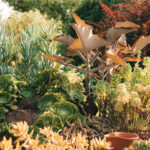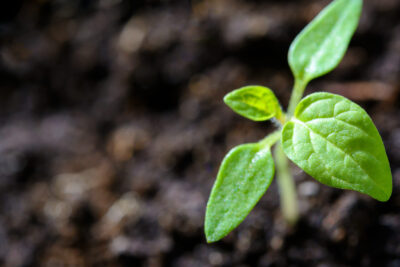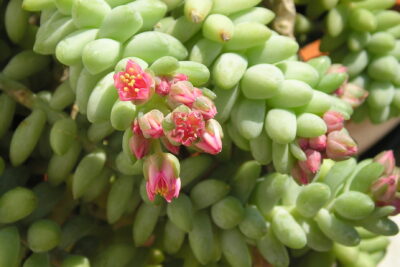
Unveiling the World of Succulent Plants and Their Unique Traits

Succulent plants have gained immense popularity in recent years due to their unique and captivating characteristics. These plants, known for their thick and fleshy leaves, come in a wide variety of shapes, sizes, and colors, making them a favorite among both novice and seasoned gardeners. Succulents are highly adaptable and can survive in various climates, making them an ideal choice for indoor and outdoor gardens alike.
We will delve into the fascinating world of succulent plants and explore their diverse traits. We will discuss the different types of succulents and their specific care requirements, including watering, sunlight, and soil needs. Additionally, we will explore the various ways in which succulents can be propagated and how to create stunning arrangements with these versatile plants. Whether you are a succulent enthusiast looking to expand your knowledge or a beginner wanting to embark on a new gardening journey, this article will provide you with the essential information to care for and appreciate the beauty of succulent plants.
- Succulent plants are low-maintenance and require minimal watering
- They store water in their leaves, stems, or roots, making them drought-tolerant
- Succulents come in a variety of shapes, sizes, and colors, adding visual interest to any space
- They can be grown indoors or outdoors, making them versatile plants for any environment
- Succulents propagate easily, allowing you to expand your collection or share with others
- These plants are known for their ability to purify the air and improve indoor air quality
- Succulents are great for beginners, as they are forgiving and can withstand neglect
- They can be used in various DIY projects, such as terrariums, wreaths, or living walls
- Succulents have unique and fascinating adaptations that allow them to thrive in extreme conditions
- The popularity of succulents has led to a wide availability of different species and hybrids
- Frequently Asked Questions
Succulent plants are low-maintenance and require minimal watering
Succulent plants have gained immense popularity among plant enthusiasts due to their unique traits and low-maintenance nature. One of the most notable characteristics of succulents is their ability to store water in their leaves, stems, and roots, allowing them to thrive in arid environments.
Unlike many other plants, succulents have adapted to survive in drought conditions by evolving thick, fleshy leaves that can store water for extended periods. This adaptation enables them to withstand long periods of drought and survive in environments where water is scarce.
Due to their water-storing capabilities, succulents require minimal watering compared to other types of plants. Overwatering can actually be detrimental to their health, as it can lead to root rot and other moisture-related issues. It is important to find a balance and only water succulents when the soil is completely dry.
Furthermore, succulents are known for their ability to thrive in a variety of growing conditions. They can tolerate both indoor and outdoor environments, making them suitable for all types of plant lovers. Whether you have a sunny windowsill or a shaded patio, there is a succulent that will thrive in your space.
Another advantage of succulents is their diverse range of shapes, sizes, and colors. From the iconic rosette-shaped echeverias to the trailing tendrils of string of pearls, succulents come in a wide array of forms that can add a touch of uniqueness and beauty to any plant collection.
 Non-Cactus Succulents: A Guide to Other Succulent Varieties
Non-Cactus Succulents: A Guide to Other Succulent VarietiesMoreover, succulents are relatively easy to propagate. Many succulent species can be propagated from stem cuttings or by separating offsets, making them a perfect choice for those who want to expand their plant collection without spending a fortune.
Finally, succulents are not only visually appealing but also have numerous health benefits. Some studies suggest that having succulents in your living space can improve air quality by removing toxins from the environment.
Succulent plants are fascinating organisms that have adapted to survive in challenging conditions. Their ability to store water, tolerate various environments, and diverse range of forms make them an excellent choice for plant enthusiasts of all levels. Whether you are a seasoned gardener or a beginner, incorporating succulents into your plant collection is sure to bring joy and beauty to your space.
They store water in their leaves, stems, or roots, making them drought-tolerant
Unveiling the World of Succulent Plants and Their Unique Traits
Succulent plants are a fascinating group of flora that have gained immense popularity in recent years. One of the most remarkable features of these plants is their ability to store water in their leaves, stems, or roots, which enables them to survive in arid and dry environments. This unique trait makes succulents highly drought-tolerant and an excellent choice for those seeking low-maintenance plants.
Unlike most other plants, succulents have adapted to thrive in harsh conditions by developing specialized tissues that store water. These tissues are often thick, fleshy, and swollen, allowing succulents to store significant amounts of water for extended periods. This ingenious adaptation helps them survive long periods of drought and limited water availability.
Succulents come in a wide variety of shapes, sizes, and forms, each with their own distinctive water storage mechanisms. Some succulents, like Aloe vera and Agave, store water primarily in their leaves. These leaves are often thick and juicy, allowing them to retain water for extended periods. Other succulents, such as Cacti, store water mainly in their stems. These stems are typically thick and cylindrical, providing ample space for water storage.
 Discover the Enchanting Beauty of Ruffled Succulent Leaves
Discover the Enchanting Beauty of Ruffled Succulent LeavesAdditionally, certain succulents store water in their roots as well. This adaptation allows them to absorb and store water efficiently, ensuring their survival during periods of limited rainfall. Examples of succulents with water-storing roots include Kalanchoe and Haworthia.
The ability of succulents to store water not only helps them survive in arid environments but also makes them excellent choices for indoor gardening. Their impressive water storage capacity means that they require infrequent watering compared to other houseplants. This makes them ideal for individuals with busy schedules or those who tend to forget to water their plants regularly.
Furthermore, the unique water storage ability of succulents contributes to their visually appealing aesthetics. The plump and juicy leaves, combined with various colors and textures, make succulents an attractive addition to any garden or indoor space. They can be arranged in planters, terrariums, or even displayed individually, adding a touch of natural beauty to any setting.
The world of succulent plants is a captivating one, filled with unique traits that set them apart from other vegetation. Their remarkable ability to store water in their leaves, stems, or roots makes them drought-tolerant, low-maintenance, and visually appealing. Whether you are a seasoned gardener or a beginner plant enthusiast, exploring the world of succulents is sure to bring joy and fascination.
Succulents come in a variety of shapes, sizes, and colors, adding visual interest to any space
Succulent plants have gained immense popularity in recent years, and it's not hard to see why. These fascinating plants come in an astounding array of shapes, sizes, and colors, making them a perfect addition to any indoor or outdoor space.
One of the most distinctive characteristics of succulents is their ability to store water in their leaves, stems, and roots. This unique adaptation allows them to thrive in arid environments where water is scarce. Their fleshy, thick leaves and stems act as reservoirs, enabling them to survive drought conditions and go for long periods without watering.
 Fast-Growing Succulents: Seed-Grown Varieties Revealed
Fast-Growing Succulents: Seed-Grown Varieties RevealedAnother intriguing trait of succulents is their ability to propagate easily. Many succulent species can grow new plants from leaves or stem cuttings, making them an excellent choice for plant enthusiasts who enjoy propagation and sharing their plant babies with friends and family.
A diverse range of succulent species to choose from
When it comes to succulents, the options are nearly endless. From the popular Echeveria and Aloe varieties to the more unique Haworthia and Crassula species, there is a succulent to suit every taste and preference.
Echeverias, with their rosette-shaped leaves and vibrant colors, are a favorite among succulent enthusiasts. These plants come in a multitude of shades, ranging from soft pastels to bold, eye-catching hues.
Aloes, on the other hand, boast spiky leaves and often produce stunning flower spikes. With their architectural beauty and drought tolerance, aloes are a popular choice for both indoor and outdoor gardens.
Haworthias, with their distinctive patterns and compact size, are perfect for those looking to add a touch of quirkiness to their plant collection. These small succulents are often adorned with intricate white lines or spots, making them a visually intriguing addition to any arrangement.
Crassulas, also known as jade plants, are renowned for their thick, glossy leaves and easy-care nature. These succulents can grow into impressive, tree-like forms, adding a dramatic touch to any garden or living space.
Caring for succulents: Tips for keeping them happy and healthy
While succulents are known for their resilience and low maintenance requirements, they still require proper care to thrive. Here are a few essential tips to keep your succulents happy and healthy:
 Exploring the Fascinating World of Tree-Like Succulent Plants
Exploring the Fascinating World of Tree-Like Succulent Plants- Provide adequate sunlight: Succulents typically prefer bright, indirect light. Place them near a window where they can receive a few hours of sunlight each day.
- Water sparingly: Succulents have adapted to survive in dry conditions, so they don't require frequent watering. Allow the soil to dry out completely between waterings and be cautious not to overwater, as this can lead to root rot.
- Use well-draining soil: Succulents thrive in soil that allows excess water to flow through. You can use a commercial cactus or succulent mix or create your own by adding coarse sand or perlite to regular potting soil.
- Monitor temperature and humidity: Succulents generally prefer warm temperatures, ideally between 60°F and 80°F (15°C and 27°C). They can tolerate low humidity but may benefit from occasional misting in dry indoor environments.
By following these simple guidelines, you can ensure that your succulents remain healthy and vibrant, providing you with years of enjoyment.
They can be grown indoors or outdoors, making them versatile plants for any environment
Succulent plants are incredibly adaptable and can thrive both indoors and outdoors. Whether you have a spacious garden or a cozy apartment, these plants can be a perfect addition to your space. Their ability to survive in different conditions makes them a popular choice among plant enthusiasts.
Indoor succulents are ideal for those who have limited outdoor space or live in areas with extreme weather conditions. These plants can be placed near a sunny window or under grow lights, allowing them to receive the necessary amount of sunlight. With proper care, they can brighten up any room and add a touch of greenery to your living space.
On the other hand, outdoor succulents can be a stunning addition to your garden or patio. They are well-suited for areas with mild climates and plenty of sunshine. Their unique and often vibrant appearances can create eye-catching focal points in your outdoor space. Whether you plant them in the ground or in containers, these plants will thrive and bring beauty to your outdoor areas.
Additionally, the versatility of succulents extends to their ability to be grown in various types of containers. From traditional pots to hanging baskets and even repurposed containers, you can get creative with how you showcase these plants. This flexibility allows you to incorporate succulents into your home decor or outdoor landscaping in a way that aligns with your personal style and preferences.
Benefits of growing succulents indoors:
- They require less maintenance compared to other houseplants
- They can improve indoor air quality by absorbing toxins
- They can serve as natural stress relievers and mood boosters
- They come in a wide variety of shapes, sizes, and colors
- They can be propagated easily, allowing you to expand your collection
Advantages of growing succulents outdoors:
 Spiky Succulents: A Guide to Thorny and Spiky Types
Spiky Succulents: A Guide to Thorny and Spiky Types- They can withstand high temperatures and drought conditions
- They attract beneficial insects like bees and butterflies to your garden
- They require minimal watering and are generally low-maintenance
- They can be used for landscaping purposes, such as creating succulent gardens and rockeries
- They can be a cost-effective option for beautifying your outdoor space
Whether you choose to grow succulents indoors or outdoors, these versatile plants will undoubtedly add charm and character to your surroundings. With their unique traits and stunning visual appeal, succulents have become a beloved choice for plant lovers worldwide.
Propagation Methods
Succulents are known for their ability to easily propagate, making them a popular choice among plant enthusiasts. There are several propagation methods that you can try to expand your succulent collection or share these unique plants with others.
Leaf Propagation
One of the most common and simplest methods of succulent propagation is through leaf propagation. To propagate a succulent from a leaf, carefully remove a healthy leaf from the parent plant, ensuring that a clean cut is made. Allow the leaf to dry out for a few days until a callus forms at the cut end. Then, place the leaf on a well-draining soil mix or in water until roots and new growth emerge.
Stem Cutting
Another popular method is stem cutting, which involves taking a cutting from the stem of a mature succulent plant. Use a clean, sharp knife or shears to make a clean cut below a node, ensuring that the cutting is at least a few inches long. Allow the cutting to dry out and form a callus before planting it in a well-draining soil mix. Keep the soil slightly moist and provide indirect sunlight until roots develop and new growth appears.
Offsets or Pups
Succulents often produce offsets or pups, which are smaller versions of the parent plant that grow from the base or sides. These offsets can be gently separated from the parent plant using a clean knife or your hands. Ensure that each offset has some roots attached. Plant the offsets in a well-draining soil mix and provide them with the same care as mature succulents.
Division
For succulents that grow in clumps, such as aloe vera or hens and chicks, division is an effective propagation method. Carefully remove the clump from its pot or garden bed and gently separate the individual plants by pulling them apart or using a clean knife. Ensure that each divided plant has roots attached and plant them in separate pots or areas of the garden.
 Vibrant Blooming Outdoor Succulents: Discover Stunning Plants
Vibrant Blooming Outdoor Succulents: Discover Stunning PlantsWater Propagation
Water propagation is a popular method for succulents that have leaves with a high water content, such as jade plants or sedums. Simply place the leaf or stem cutting in a container with water, ensuring that the bottom end is submerged. Change the water every few days to prevent bacterial growth. After a few weeks, you should start to see roots forming. Once the roots are well-established, transfer the cutting to a well-draining soil mix.
By exploring these various propagation methods, you can easily expand your succulent collection and share these unique plants with others. Experiment with different techniques and enjoy the rewarding process of growing your own succulents!
These plants are known for their ability to purify the air and improve indoor air quality
Succulent plants are not only visually appealing, but they also offer numerous benefits to our indoor environment. One of the most remarkable features of succulents is their ability to purify the air by removing harmful toxins and pollutants.
Through a process called photosynthesis, succulents absorb carbon dioxide and release oxygen, effectively improving the air quality in our homes. This is particularly beneficial for individuals who suffer from respiratory issues or allergies, as succulents can help alleviate symptoms and create a healthier living space.
Moreover, succulents are known to release moisture into the air through a process known as transpiration. This natural mechanism helps to increase humidity levels, which is especially beneficial in dry or arid climates. By doing so, succulents can prevent dry skin, sore throats, and other discomforts caused by low humidity.
Studies have also shown that having succulent plants indoors can enhance overall well-being and productivity. The presence of greenery has been linked to reduced stress levels, increased focus, and improved mood. Therefore, incorporating succulents into your indoor space not only adds a touch of natural beauty but also contributes to creating a more harmonious and healthier environment.
Succulents are great for beginners, as they are forgiving and can withstand neglect
When it comes to gardening, succulent plants are a popular choice among beginners. These plants have gained immense popularity due to their unique traits and ability to survive in harsh conditions. One of the main reasons why succulents are great for beginners is their forgiving nature. Unlike other plants, succulents can withstand neglect and still thrive.
 Discover the Perfect Buddha Temple Succulent for Your Home
Discover the Perfect Buddha Temple Succulent for Your HomeSucculents have adapted to survive in arid regions with limited access to water. They have developed thick, fleshy leaves and stems that store water, allowing them to survive for long periods without being watered. This ability makes them perfect for those who tend to forget about their plants or have busy schedules.
Another unique trait of succulents is their ability to propagate easily. Many succulent varieties can be propagated from leaves or cuttings, making them an excellent choice for those who want to expand their collection without spending a lot of money. Simply pluck a leaf or cut a stem, allow it to callous, and then place it in well-draining soil. With a little patience, you'll soon have a new plant.
Low maintenance and versatile
In addition to being forgiving and easy to propagate, succulents are known for their low maintenance requirements. These plants prefer bright light, but they can adapt to various light conditions. Whether you have a sunny window or a shady corner, there's a succulent that will thrive in your space.
When it comes to watering, succulents prefer to be underwatered rather than overwatered. It's important to allow the soil to dry out completely between waterings to prevent root rot. Overwatering is one of the most common mistakes made by beginners, but once you understand the watering needs of succulents, it becomes easier to care for them.
Succulents are also versatile in terms of their appearance. They come in a wide range of shapes, colors, and textures, making them an excellent choice for adding visual interest to your indoor or outdoor space. From the spiky leaves of the Echeveria to the rosette-like arrangement of the Sempervivum, there's a succulent for every aesthetic preference.
Succulents are a great choice for beginners due to their forgiving nature, ability to withstand neglect, and ease of propagation. These low maintenance plants can adapt to various light conditions and add visual interest to any space. So if you're looking to venture into the world of gardening, consider adding succulents to your collection and enjoy their unique traits.
They can be used in various DIY projects, such as terrariums, wreaths, or living walls
 Best Pink Flowering Ground Cover Succulents for Your Garden
Best Pink Flowering Ground Cover Succulents for Your GardenSucculent plants have gained immense popularity in recent years, and it's no surprise why. These unique plants possess a myriad of traits that make them a perfect choice for various DIY projects. Whether you're looking to create a captivating terrarium, a stunning wreath, or a vibrant living wall, succulents provide the perfect touch of greenery.
One of the greatest advantages of succulent plants is their ability to thrive in a wide range of conditions. Their ability to store water in their leaves, stems, and roots allows them to withstand drought and survive in arid environments. This resilience makes them an ideal choice for low-maintenance projects.
When it comes to creating terrariums, succulents add a touch of natural beauty and elegance. Their diverse shapes, colors, and textures create visually appealing miniature landscapes within glass containers. You can play around with different varieties, combining tall and cascading succulents to create a visually striking arrangement.
Wreaths adorned with succulents bring a fresh and contemporary twist to traditional decor. By incorporating succulents into your wreath, you can create a unique focal point for your front door or indoor spaces. The lush green hues of these plants blend well with other natural materials like moss, twigs, or pinecones, adding a touch of sophistication to your wreath.
For those looking to make a bold statement, succulents are an excellent choice for creating living walls. These vertical gardens not only enhance the aesthetics of any space but also provide numerous benefits. Succulents can purify the air, reduce noise levels, and even regulate humidity. Their ability to grow in limited soil space makes them perfect for vertical gardening projects.
When using succulents in your DIY projects, it's essential to consider their care requirements. These plants thrive in well-draining soil and prefer bright light conditions. It's crucial not to overwater them, as excessive moisture can lead to root rot. Additionally, succulents are adaptable and can be propagated easily, allowing you to expand your collection and experiment with different varieties.
Succulent plants offer a world of possibilities when it comes to DIY projects. Whether you're creating a terrarium, wreath, or living wall, succulents provide a unique and captivating touch of nature. With their low-maintenance nature and visually appealing traits, succulents are a perfect choice for both beginner and seasoned DIY enthusiasts.
 10 Unique Indoor Succulents That Resemble Hair for a Whimsical Touch
10 Unique Indoor Succulents That Resemble Hair for a Whimsical TouchSucculents have unique and fascinating adaptations that allow them to thrive in extreme conditions
Succulent plants, with their thick and fleshy leaves, have captivated the hearts of plant enthusiasts around the world. These remarkable plants have evolved to survive in some of the harshest environments on Earth, ranging from hot deserts to arid coastal regions. Their ability to store water in their leaves, stems, and roots sets them apart from other plants, making them highly resilient and adaptable.
One of the most striking features of succulents is their ability to retain water. Their leaves are like miniature reservoirs, capable of storing large amounts of water for extended periods. This adaptation allows succulents to survive in regions where rainfall is scarce and unpredictable. When water becomes scarce, the succulent plants can draw upon their stored water reserves, keeping themselves hydrated even during prolonged droughts.
But their water storage abilities don't end there. Succulents also have specialized tissues in their leaves, known as succulent parenchyma, which can efficiently store water. These tissues are equipped with enlarged cells that can expand and contract as water levels fluctuate, ensuring optimal water storage and preventing dehydration.
Furthermore, many succulent species have developed a waxy or powdery coating on their leaves, known as a cuticle. This cuticle serves as a protective barrier, reducing water loss through evaporation and preventing excessive moisture from entering the plant. This adaptation is especially crucial in arid environments where the scorching sun and dry winds can quickly dehydrate plants.
Another remarkable adaptation of succulents is their ability to survive with minimal root systems. Their roots are shallow and widespread, enabling them to absorb water quickly after rainfall or morning dew. In addition, succulent roots can store water, just like their leaves, ensuring a constant supply of moisture to sustain the plant during dry periods.
It's not just their water-saving abilities that make succulents unique. Many succulent species have evolved to withstand high levels of sunlight and heat. Their thick, fleshy leaves contain specialized cells called chlorenchyma cells, which help to protect the plants from excessive sunlight and reduce the risk of sunburn. These cells also contain a high concentration of chlorophyll, allowing succulents to carry out photosynthesis efficiently even in intense sunlight.
 Top 10 Tall Succulent Plants: Perfect for Indoor or Outdoor Use
Top 10 Tall Succulent Plants: Perfect for Indoor or Outdoor UseOverall, succulent plants are a testament to the wonders of nature's adaptations. Their ability to store and conserve water, along with their resilience to harsh environmental conditions, makes them not only visually stunning but also highly fascinating. Whether you're a seasoned succulent enthusiast or just starting to explore the world of plants, succulents are sure to leave you in awe of their unique traits.
The popularity of succulents has led to a wide availability of different species and hybrids
Succulent plants have gained immense popularity among plant enthusiasts in recent years. Their unique ability to store water in their thick, fleshy leaves and stems has captivated the hearts of many, making them a favorite choice for both indoor and outdoor gardens.
Thanks to their rising popularity, there is now a wide variety of succulent species and hybrids available in the market. Whether you're a seasoned succulent lover or a beginner looking to explore this fascinating plant world, you'll find an endless array of options to choose from.
Exploring the diverse world of succulent plants
The world of succulent plants is incredibly diverse, with thousands of different species and hybrids to discover. From the iconic Aloe Vera to the striking Echeveria, each succulent plant boasts its own unique set of traits and characteristics.
One of the most intriguing aspects of succulents is their ability to adapt to various environments. This adaptability allows them to thrive in arid regions, such as deserts, where water is scarce. Their ability to store water enables them to survive long periods of drought, making them excellent choices for low-maintenance gardens.
Another fascinating trait of succulents is their wide range of shapes, sizes, and colors. Some succulent species feature rosette-shaped leaves, while others have trailing or cascading growth habits. Additionally, succulents come in a vast array of colors, ranging from vibrant greens to deep purples, blues, and even reds.
Choosing the right succulent for your garden
When it comes to selecting succulents for your garden, there are several factors to consider. It's essential to choose plants that are well-suited to your local climate and the specific conditions of your garden.
For outdoor gardens, it's crucial to select succulents that can withstand the temperature fluctuations and sunlight exposure of your region. Some succulents, like Sedum and Sempervivum, are incredibly hardy and can thrive in various climates. Others, such as Haworthia and Gasteria, prefer partial shade and are better suited for areas with less direct sunlight.
If you're planning an indoor succulent garden, it's important to consider the lighting conditions in your home. Most succulents require bright, indirect light to thrive. However, some species, like Sansevieria and Zamioculcas zamiifolia, can tolerate lower light levels.
- Consider the size of the plant: Depending on the available space, you may opt for small, compact succulents or larger, statement-making varieties.
- Take into account water requirements: While succulents are known for their ability to store water, different species have varying water needs. Some require more frequent watering, while others prefer drier conditions.
- Choose based on aesthetics: Succulents come in an astonishing array of colors, textures, and shapes. Consider your personal preferences and the overall aesthetic you want to achieve in your garden.
By carefully considering these factors, you can choose the perfect succulents that will thrive in your garden and bring joy to your green space for years to come.
The popularity of succulents has led to an expanded selection of diverse species and hybrids. From their ability to adapt to harsh environments to their wide range of shapes and colors, succulent plants continue to captivate plant lovers around the world. By understanding the specific needs of different succulent varieties, you can create a stunning garden that showcases the beauty and uniqueness of these remarkable plants.
Frequently Asked Questions
1. What are succulent plants?
Succulent plants are a group of plants that have thick, fleshy leaves or stems that store water. This adaptation allows them to survive in arid environments.
2. How do you care for succulent plants?
Succulent plants require well-draining soil, ample sunlight, and infrequent watering. Overwatering can cause root rot, so it's best to let the soil dry out between waterings.
3. Can succulent plants be grown indoors?
Yes, many succulent plants can thrive indoors as long as they receive adequate sunlight and are placed in well-draining pots. They are great choices for indoor gardening.
4. Are succulent plants easy to propagate?
Yes, succulent plants are generally easy to propagate. Many species can be propagated from stem cuttings or by separating offsets, making them a popular choice for plant enthusiasts.
If you want to read more articles similar to Unveiling the World of Succulent Plants and Their Unique Traits, you can visit the Varieties and Colors category.






You Must Read